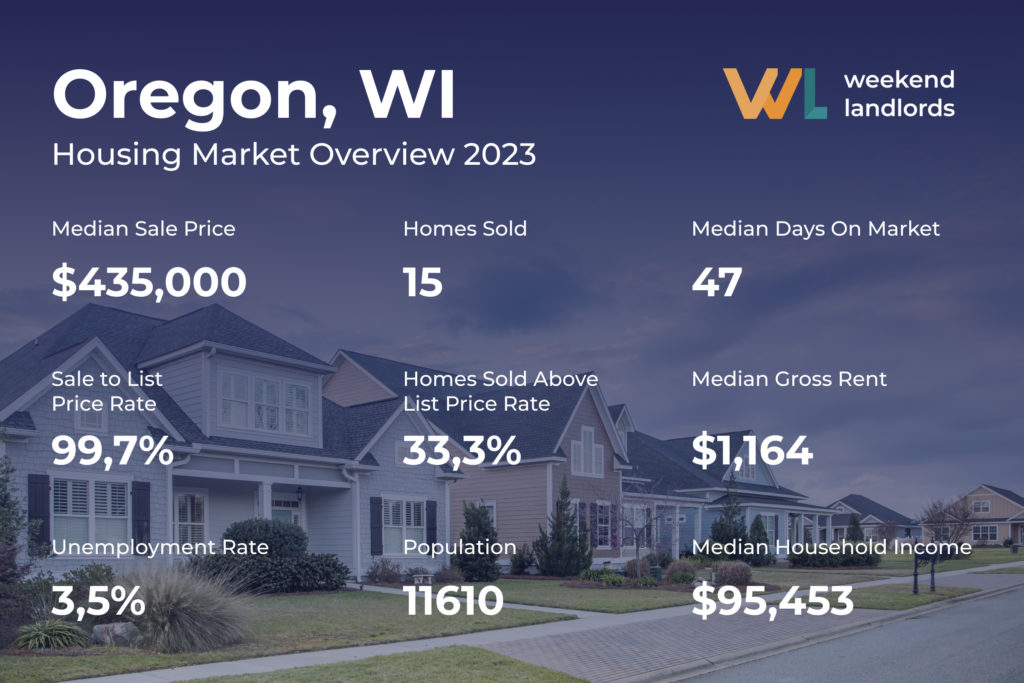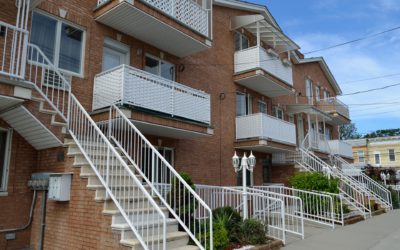Are you interested in navigating what’s happening in the Oregon housing market in 2024? If you’re a property manager or a landlord, you may be wondering about the current trends, potential challenges, and prospective opportunities in this ever-evolving landscape. Is it a buyer’s or a seller’s market? How are home prices expected to fare? Join us as we explore the complex yet intriguing world of Oregon’s housing market for 2024.
Oregon Housing Market Overview 2023

Median Home Prices and Sales in Oregon
As of November 2023, the real estate market in Oregon has experienced a notable decline in home prices, which have fallen by 14.6% from the previous year, bringing the median home price to $435,000. This downturn is also reflected in the time homes spend on the market before selling.
Median Days on Market
The real estate market in Oregon has become more dynamic recently, with homes selling faster than in the previous year, averaging 47 days on the market compared to 55 days last year. This trend suggests a more competitive environment, despite a decrease in home prices. While the average home sells for approximately 1% below the listing price and typically goes pending in about 47 days, the market also shows signs of high demand for certain properties. Notably, homes that are particularly desirable, often referred to as “hot homes,” can sell for close to the asking price and may go pending in as little as 31 days.
Number of Homes Sold
In November this year, the Oregon housing market experienced an uptick, with the number of homes sold rising to 15, an increase from the 12 homes sold in the same month last year.
Challenges and Opportunities in the Oregon Housing Market
Navigating the real estate market can be complex, especially with fluctuating dynamics and an unpredictable economy. Analyzing trends and predictions in the Oregon housing market for 2024 can shed light on potential challenges and opportunities.
The Impact of High Demand and Low Supply
A significant challenge in the Oregon real estate market is the high demand for homes and the limited supply. With only two months of inventory, the competition amongst buyers can be fierce. However, this situation presents a unique opportunity for sellers to get optimal prices for their properties, as high demand can drive up home values. Additionally, investors with rental properties can benefit from the increased demand for rental homes.
The Role of Mortgage Interest Rates
Predictions indicate a potential increase in mortgage interest rates in 2024, which could result in a decrease in home affordability. On the flip side, higher interest rates may deter some buyers, leading to a less competitive market for those who can afford the increased rates.
The Potential for Negotiable Buyer Broker Commissions
In a competitive market, buyer broker commissions can be a factor in clinching a deal. With the high demand and low supply, there’s the potential for negotiation on these commissions. This could be an advantage for buyers who can leverage these negotiations to get better deals.
The Influence of the State’s Economy and Cost of Living
Oregon’s economy and cost of living have a significant influence on the housing market. The state’s unemployment rate was lower than the national average at 3.6%, and industries like technology and healthcare have seen strong job growth. This economic strength could bolster the housing market, despite the potential challenges of higher interest rates and limited inventory.
However, the rising cost of living in Oregon, particularly in urban areas, could pose a challenge for potential buyers. Policymakers are exploring ways to address this issue, such as increasing funding for affordable housing programs and encouraging the development of more housing units.
Predictions for the Oregon Housing Market in 2024
The Oregon housing market is known for its dynamism, and 2024 is expected to be no different. Three key trends are emerging that are worth keeping an eye on: a potential shift from a seller’s market to a buyer’s market, the fastest-growing areas in terms of sales prices, and the impact of population growth on housing demand.
The Shift from a Seller’s Market to a Buyer’s Market
In 2023, Oregon’s housing market was primarily a seller’s market, characterized by high demand and a lower number of homes with price drops. However, recent data suggests a potential shift towards a more balanced or even buyer’s market. This is largely due to modest increases in home prices and a slight rise in the supply of homes. Although it’s still a challenging market for buyers, these changes could make 2024 a more opportune time for prospective homeowners.
The Benefits of Lower Mortgage Rates for Homebuyers
The expected average mortgage rates of 6.8% in 2024, with rates edging down over the year to reach 6.5% by the end of the year, will benefit homebuyers. Lower mortgage rates mean lower monthly payments, making homeownership more accessible to a broader range of individuals.
For property managers and landlords, this could translate into a larger pool of potential tenants.
The Impact of Population Growth on Housing Demand
Population growth continues to impact housing demand in Oregon. As more people move into the state, demand for housing inevitably rises. This can lead to increased competition, higher prices, and quicker sales. For landlords and property managers, this underscores the importance of efficient property management to keep pace with the growing demand.
Frequently Asked Questions
As we continue our deep dive into the evolution of the Oregon housing market, we’ve gathered some of the most common questions landlords and property managers have about the state’s real estate trends. Let’s address these queries to give you a clearer picture of what’s happening and what to expect in the future.
Why is the Cost of Living So High in Oregon?
A pivotal factor contributing to Oregon’s high cost of living is the housing market. Particularly in urban areas like Portland, the demand for homes significantly outpaces the supply. This imbalance drives up home prices and rent rates, making housing the primary reason for the elevated cost of living. Other factors, such as food, transportation, and healthcare, also tend to be more expensive in Oregon than the national average.
Is Oregon Real Estate a Good Investment?
Despite the high cost of living, Oregon remains an attractive market for real estate investments. The state offers a robust job market, excellent education system, state-of-the-art healthcare facilities, and numerous leisure options, attracting a steady influx of new residents. Even though home prices have experienced a slight dip this year, the long-term trend shows a steady increase in home values. This suggests that investing in Oregon real estate could yield significant returns in the future.
When Will Housing Prices Drop in Oregon?
Predicting when housing prices will drop is always tricky, as it depends on a variety of factors such as interest rates, economic conditions, and supply-demand dynamics. While there’s been a slight decrease in median home prices recently, the general trend points to a continued increase in the coming years due to the state’s tight housing inventory.
Will There Be a Housing Market Crash in Oregon?
While no one can predict with absolute certainty, a housing market crash in Oregon seems unlikely at present. Despite rising interest rates, Oregon’s strong economy, low unemployment rate, and persistent housing shortage provide a solid buffer against a potential crash. The state’s steady population growth also continues to drive demand for housing, further stabilizing the market.






0 Comments